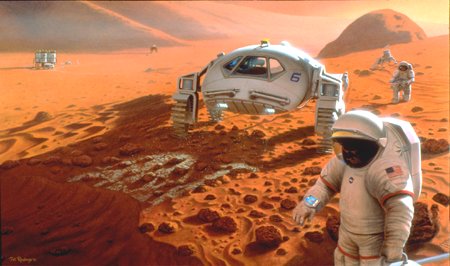What Does Going to Mars and Volunteer Driving Have in Common?

There are not many places where I get good ideas but the best seem to come from when I am in the 3 B’s…bed, bath or bus. This is a time when the mind is wandering and combining different ideas to come up with new (and sometimes bizarre) ideas. Amazon Jeff Bezos once said “you know you are an entrepreneur when you are in the bath and you are trying to figure out how to make the faucet better”. Elon Musk (founder of Tesla Cars, SpaceX) also seems to get his best inspiration in these environments…and his latest creation was hatched when sitting in a car stuck in Los Angeles traffic where he was inspired to invent the concept of the Hyperloop. This is a concept of a tube rail system which would transport people in 45 minutes from Los Angeles to San Francisco…a trip that would normally take 9 hours by car. But unlike Musks’ SpaceX company which has an end goal to go to Mars and uses paid staff, the latest company called Hyperloop is taking a unique approach to recruiting people to help build this cutting edge transportation system…volunteers.
So how do you get volunteers to donate their energy and time to what could be the most technically challenging ground transportation project ever? In this case, the incentives that are being offered to Hyperloop staff is stock options in the company and no wages. But creating complex systems with volunteers is not really a new thing as Open Source Software projects have been doing this for over 20 years. Here the volunteers get “psychic rewards” or “social rewards” by being part of something that will be used for a greater community of users. In Shanghai China, there are over 1.8 million volunteers that do philanthropic and volunteer work. In this case, the Shanghai government rewarded these volunteers through vending machines that distributed refreshments to them based on their volunteer time. In Japan, a Time Bank system was introduced that would help the elderly in their daily activities. Younger people would volunteer their time for elderly citizens and this time would be banked for them to exchange for other volunteers to do the same for their elderly parents.
Volunteer driving has historically been an activity focused on helping the elderly, cancer and dialysis patients get around after they lose the capability to drive. The main intrinsic motivation for these drivers have been psychic and social rewards. But now with the capability of digital tracking, mobile technology and big data there could be a lot of new and interesting ways to give back to volunteer drivers.
If you like this post then please drop us a line at info@spedsta.com and check out our other thoughts at www.spedsta.com/blog!
Recent Comments